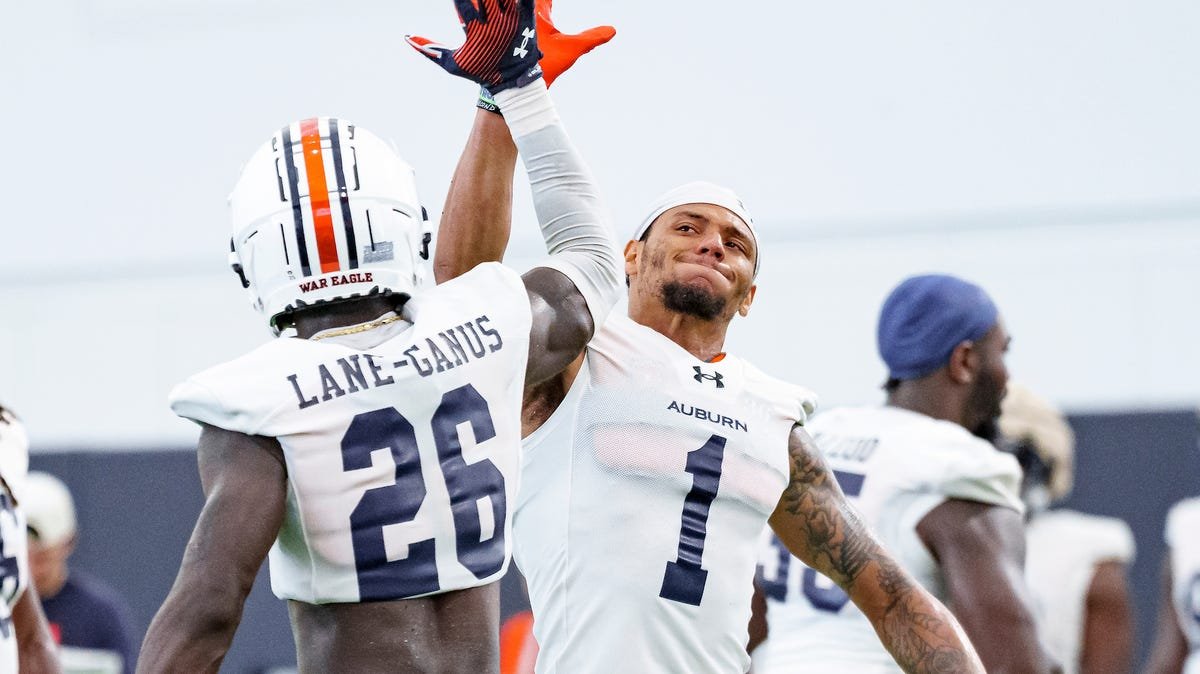AUBURN — After the NCAA’s decision to approve helmet communication for FBS schools, Auburn football is in full effect with the new technology during preseason practices.
Five players will be selected to have the coach-to-player communication per game and only one helmet with the device is allowed on the field at a time. A green dot displayed on the back of the helmet will help officials identify which players are connected with sideline communication.
More: Fan poll: Who will lead Auburn football in receiving yards this season?
More: Observations: First-team defense wins day, freshman WRs pop at Auburn’s Saturday scrimmage
From coach to player, the communication is one-sided: Players will not be able to respond back to coaches. The coaches communication is equipped with a radio allowing them to speak with the players throughout the game, but not during plays. Only one coach will be able to speak with a player at a time. In a situation where multiple coaches speak, the primary speaker will be alerted when another coach has connected its radio.
At the 15-minute mark of the play clock, all communication will be shut off for both sides of the ball.
The helmet devices are rechargeable and can last from three to four hours. The gameday plan for the Tigers will be to charge them during halftime to avoid any issues during the game. If a team system is cut out or not working, the opposing team will not be able to use its system until the situation is resolved.
Equipment manager Matt Hard said Wednesday that players have responded well to the change.
“We are working through getting the volume right, because working with a walkie-talkie like device, the sound can get a bit fuzzy,” Hard said. “Overall, it’s been something they have enjoyed, and it’s a new part of football.
“This something that is prevalent in the NFL, so when they walk into their first training camp this won’t be completely new to them. They will get more and more comfortable with it the more games we go through this season.”
Members of the Auburn defensive coaching staff have seen how effective the system is in practice and scrimmage settings this month. Defensive coordinator DJ Durkin believes it will make a minimal difference during games because only one player will have it on the field.
“It will help some of our communication, but it does not eliminate the big part of the game where we are signaling from the sideline. We have to keep that going,” Durkin said. “At the end of the day, it will be one guy on the field getting that direct contact. We are going through a lot of different ways on how that would be implemented, but a lot of the play-calling will still look the same.”
Defensive tackles coach Vontrell King-Williams shared how having the technology has impacted plans for his unit.
“Defensive line-wise we haven’t used it directly. The best part about is coach Durkin can tell our linebackers on a third-and-long situation to remind them not to jump offsides,” Williams said.
Defensive backs coach Wesley McGriff added how he believes this technology will help with players’ confidence during games.
“This will enhance our group, because when you look at the classification of the team we have some young guys back there and the more they learn and adjust to the change, it will help with their confidence and help them grow up,” McGriff said. “This will be one of the cornerstones as we go down the road. Any time you add something that can increase player ability and speed, execution should go up. This system has helped us tremendously.”





